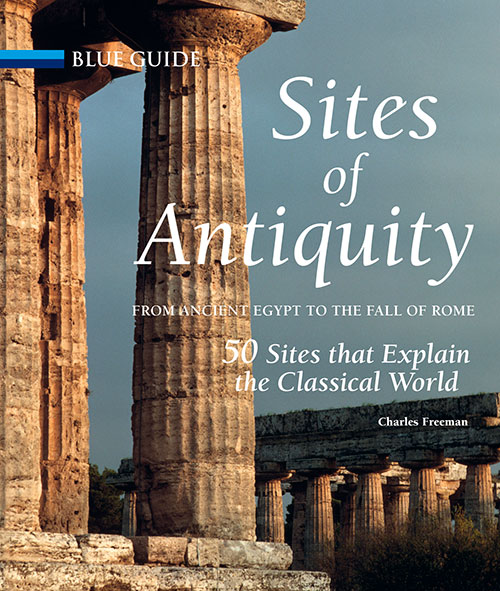In his book Sites of Antiquity historian Charles Freeman takes 50 sites and uses them to illustrate the development of the Classical World. But readers have asked, why those particular sites? His reply:

It was good fun picking out 50 sites that I felt defined the Classical world. I interpreted ‘classical ‘ quite widely, to take it beyond just Greece and Rome, so there was ancient Egypt at one chronological end and early Christian sites at the other. I hope this makes it a special book for anyone with an interest in these great civilisations.
Of course, it made sense to highlight sites I knew from having visited them. I have been to every one of the 15 sites featured in the Greek and Hellenistic sections. They are all interesting ones and many of them, such as Mycenae, Dodona or Pergamon, are in superb physical settings. There is no way a book can show off the extraordinary atmosphere they have and it would be wonderful if this book can inspire readers to travel to these places.
I know Rome well, which explains why I chose seven different sites in the city. The Pantheon must be one of the most extraordinary buildings of antiquity, not just in the fact of its survival but also as a feat of architecture: its dome is a semicircle whose diameter across is exactly the same size as the distance of the top from the floor. Amazing design!
I have other favourites too. I lead cultural tours and am always happy to include a visit to the city of Aphrodisias, with its wonderful display of excavated sculpture. And nothing can quite equal going inside a pyramid or seeing the temple of Abu Simbel in the early morning light. Sadly I never got to Palmyra before its looting and destruction, but have tried to give a sense of its importance as an opulent trading centre.
Annabel Barber and Hadley Kincade, my editors, chose a stunning array of illustrations but, in the best tradition of the Blue Guides, we determined to make this much more than a picture book. So we included the historical background to the cultures, plenty of site plans and explanations of a lot of the architectural terms. The aim was to make something special for anyone who is enthusiastic about the ancient world or who wants an introduction to its fascinating civilisations. I think we succeeded.
Charles Freeman






